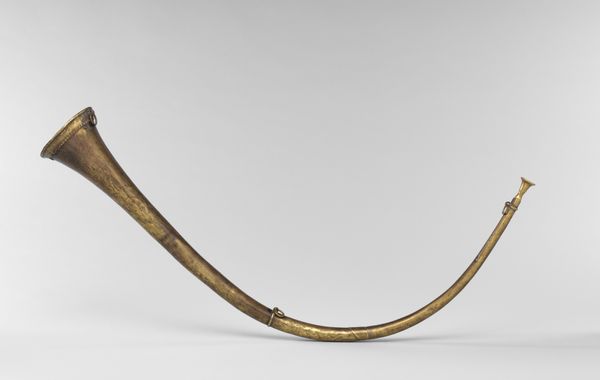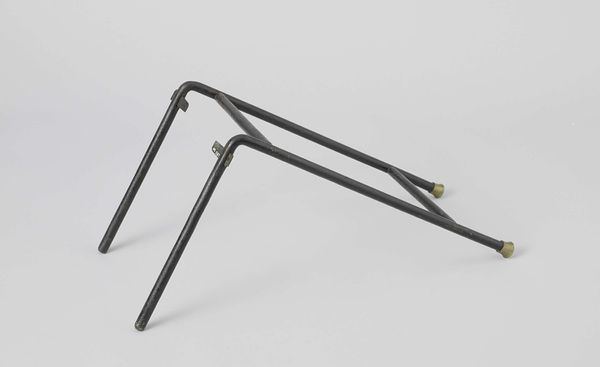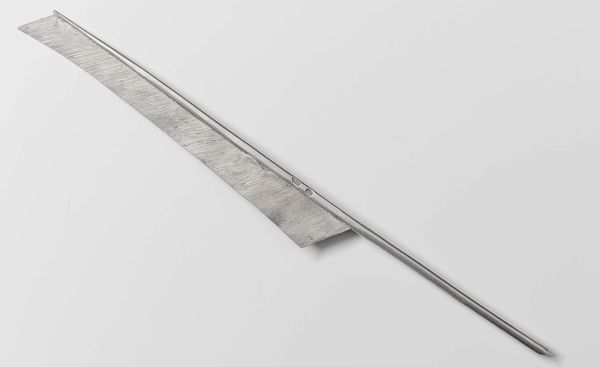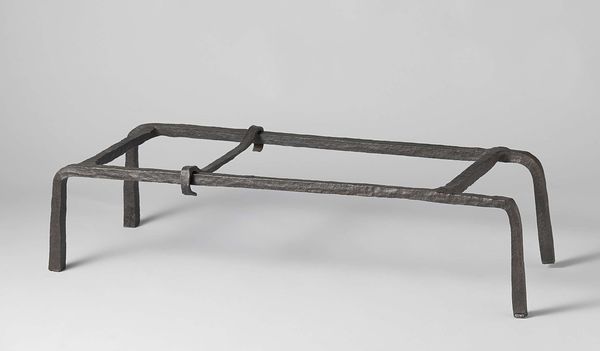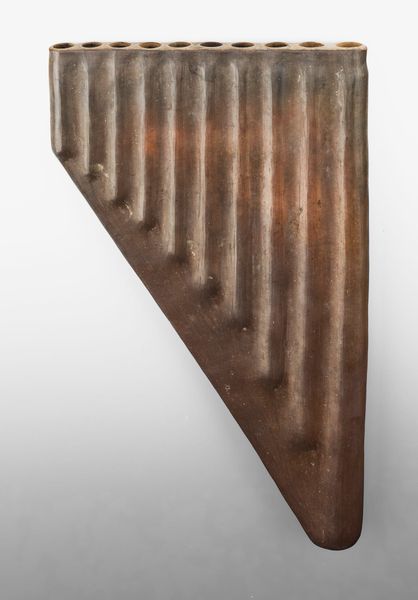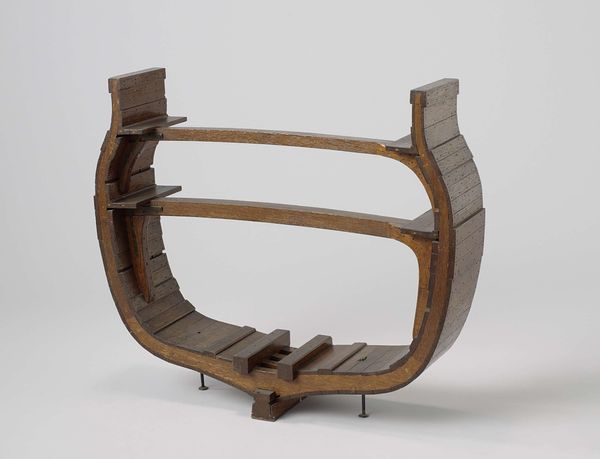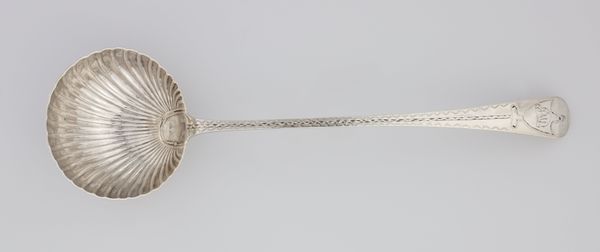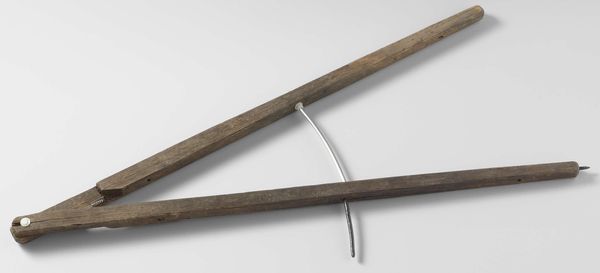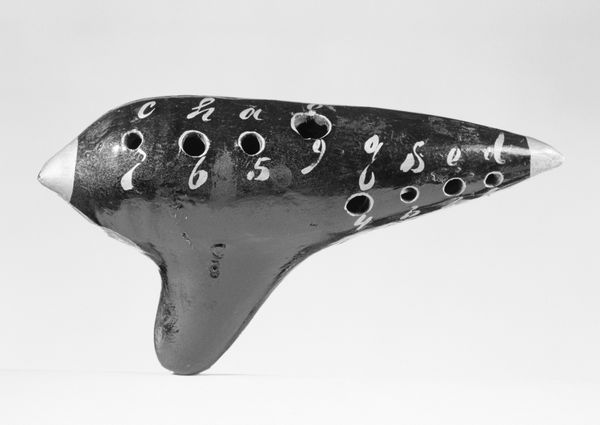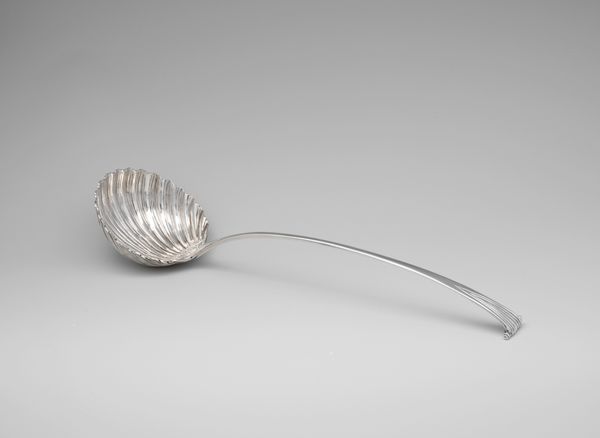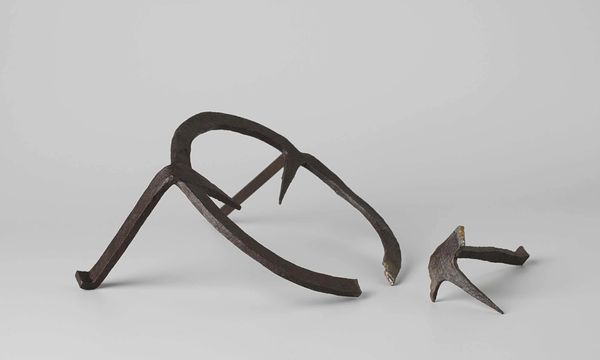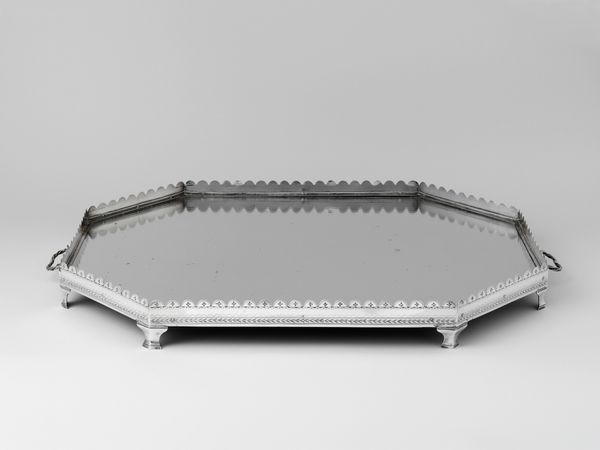
metal, bronze, sculpture
#
medieval
#
metal
#
bronze
#
sculpture
#
horse
#
history-painting
#
armor
#
realism
#
arm
Dimensions: L. 37 1/2 in. (95.2 cm); W. 11 3/4 in. (29.9 cm); Wt. 6 lb. 14 oz. (3,070 g)
Copyright: Public Domain
Curator: Here we have what is known as a 'Crinet,' dating from somewhere between 1510 and 1560. This expertly crafted piece, made from bronze and other metals, is attributed to Valentin Siebenbürger. Editor: Whoa. It’s like the articulated spine of some ancient metal creature! Incredibly beautiful and brutal at the same time. Gives me chills. Curator: Precisely. As armor, its protective qualities extend to both physical and symbolic realms, functioning as a visual signifier of power and status in its era. It’s not just metal, it’s layered with meanings. Editor: The precision of it! To think someone labored over each plate, riveting them so carefully. I mean, functionally, sure, it protected a horse's neck… but the craft involved… it’s art. Pure, unadulterated metal poetry. Curator: I agree entirely. Siebenbürger's meticulous craftsmanship connects us to an entire lineage of European martial culture and equestrian symbolism. Horses weren’t simply beasts of burden; they were instruments of war and prestige. This ‘Crinet’ embodies that relationship. The repetition of its segmented form echoes in medieval visual culture too. Editor: So it reflects order… like a physical manifestation of military discipline, but with this gorgeous, almost organic flow. Each little dimple from the rivets glints… imagining it in sunlight… wow! This one object kind of holds so much Medieval ethos. Curator: Indeed, these visual motifs, meticulously repeated and skillfully rendered in metal, evoke ideas about chivalry, honor, and the machinery of warfare that underpinned society itself. It’s a reminder of our entangled relationship with both violence and artistry. Editor: It’s easy to think of Medieval art as illuminated manuscripts or Gothic cathedrals. To find so much sophistication in something literally made for war… It rearranges my perception of beauty back then, makes me question the relationship of intention and appreciation, of purpose and aesthetics… Curator: Hopefully, this encounter prompts deeper reflections on not just the past, but the ever-evolving roles of art, function, and symbol throughout human history. Editor: For me, this piece just underscores that beauty and awe can come from the most unexpected places, and even within things created for utilitarian, even violent purposes. So, pretty cool arm, huh?
Comments
No comments
Be the first to comment and join the conversation on the ultimate creative platform.
